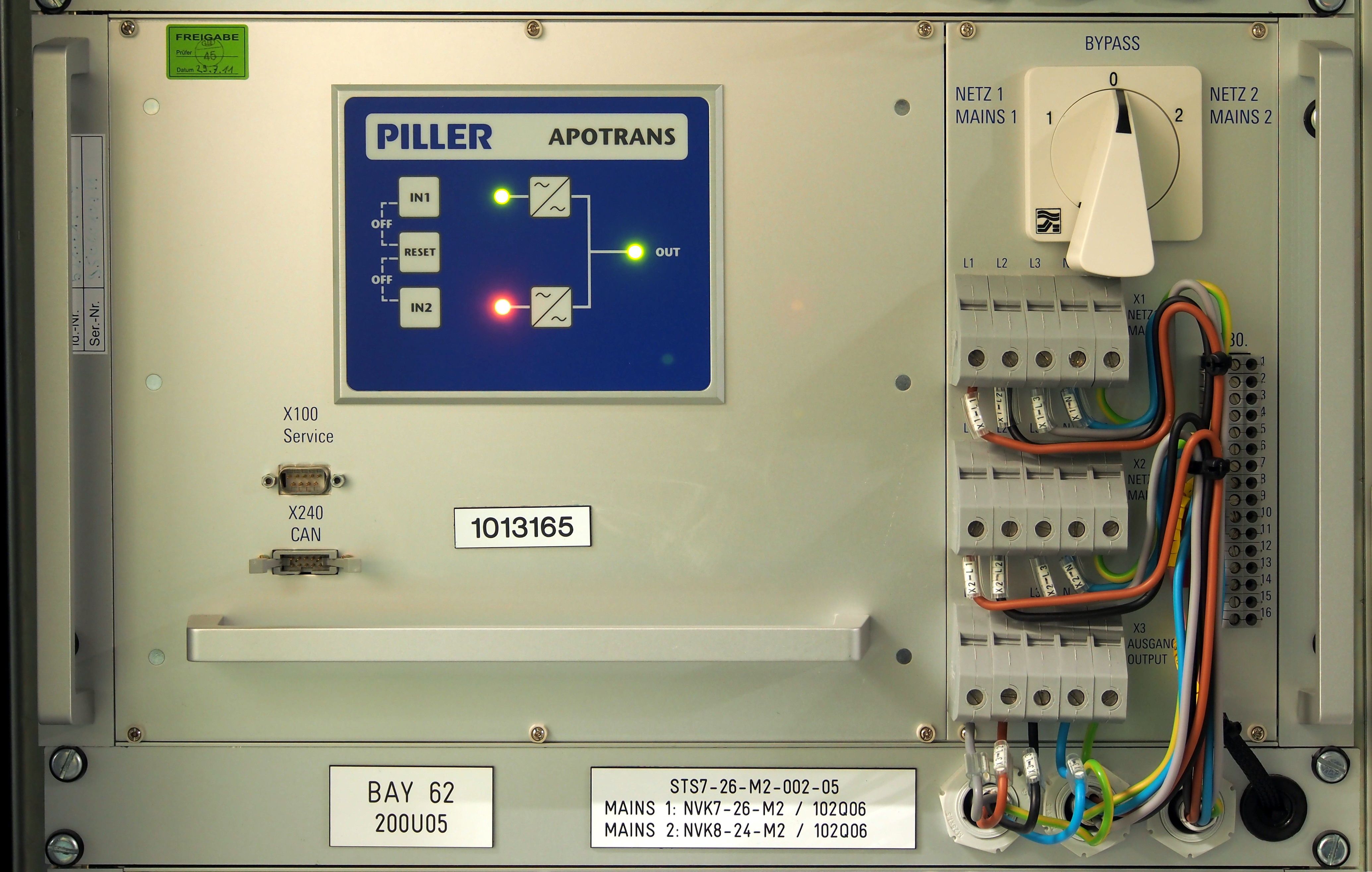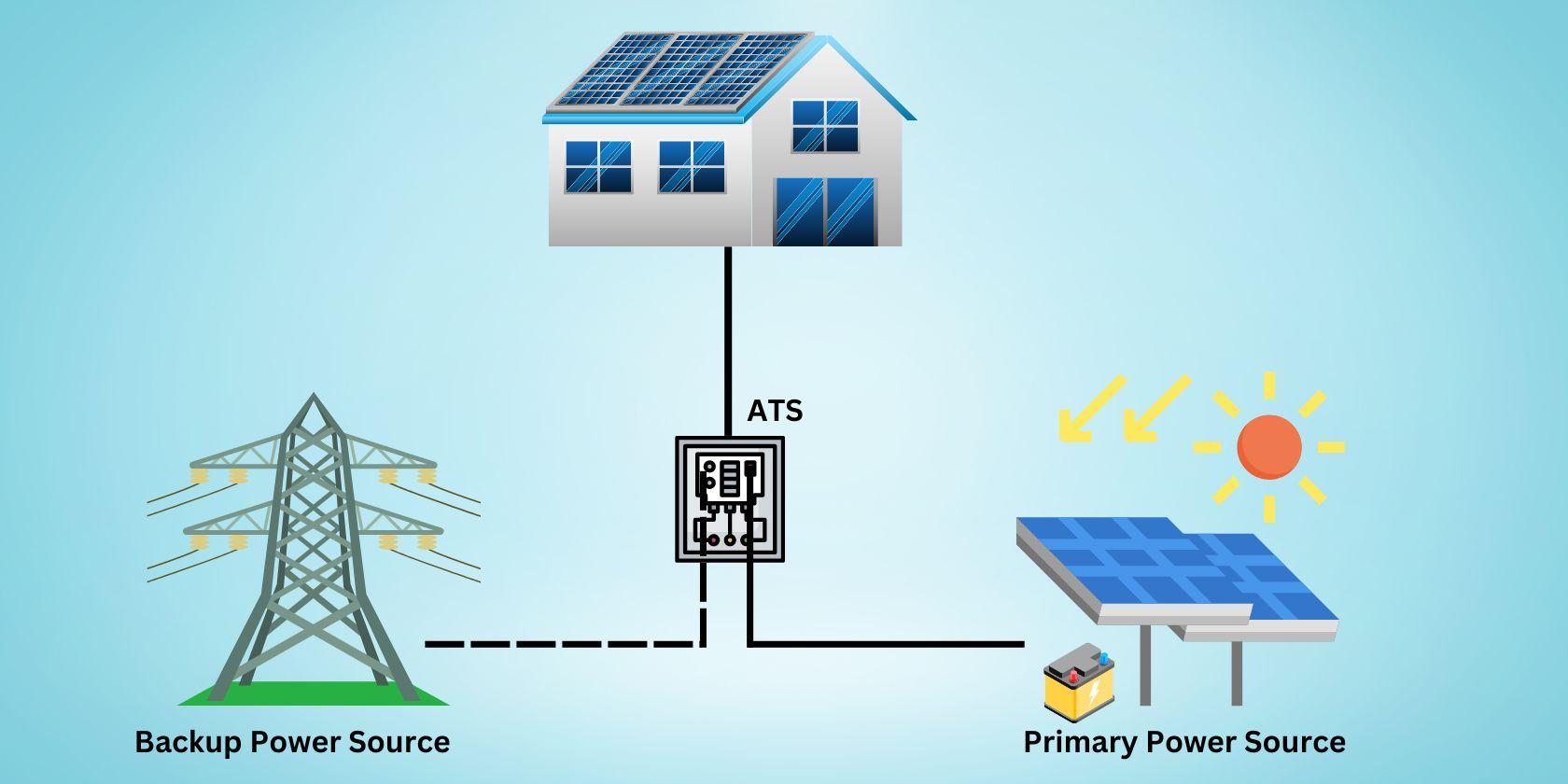With solar becoming a popular option for sourcing energy, many homeowners have started implementing grid-tie and hybrid solar power systems into their homes. Both grid-tie and hybrid systems allow homes to have two sources of power, one from the grid and one from the solar power system. Meaning you’ll have a backup in case your primary power source fails.
For safety and convenience, these grid-tie and hybrid systems often use a device known as an automatic transfer switch (ATS). So, what’s an ATS? What does it do, what are its benefits, and why would you need one?
What Is an Automatic Transfer Switch (ATS)?
An automatic transfer switch is a self-acting electrical device that switches between your primary and backup power source when the primary fails. Having an ATS installed with your solar-powered home ensures you get continuous power without the need to manually switch from solar to the grid or vice versa.
Although often used in solar power systems, ATS can also be used in various other setups where a household or facility has two sources of power. Whether it’s grid to solar, grid to battery, or grid to turbine, as long as you have at least two power sources you’ll want to install an ATS.
Benefits of Using an ATS
Without an ATS, you’d usually see manual transfer switches installed in various solar home setups. When power fails from your primary power source, a manual switch allows you to switch between your primary and backup power source, so what exactly are the benefits of using an automatic switch compared to a manual one?
Continuous Power
The main reason for implementing an ATS into your solar power system is that it allows a continuous flow of electricity within your household even when the grid or your solar generator fails. Depending on the ATS you choose to install, you can even enjoy uninterrupted power where the ATS switches to your backup power source within a tenth of a second. In fact, every uninterruptible power source (UPS) employs the use of an ATS to provide uninterruptible power and prevent damage to your computer.
Convenience
Integrating an ATS into your electrical system allows you and your family to conveniently have electricity without the need to manually switch to your backup supply. This is especially true for houses where the manual switch is located in attic basements or other hard-to-reach areas of the house.
Simplicity
Some ATSs can also be set up to power only select areas or electrical equipment in the house. This is important because backup power usually comes in limited supplies. This means you can’t just power your house at 100% capacity, since you likely don’t want to burn through your stored power too soon. Having an ATS and setting it to only provide power to certain areas of the house is a great way to conserve energy during power outages
Safety
Having to manually switch between primary to back up power in a dark environment is dangerous. What’s worst is that you might not even be at the house when power goes off. It would be worrisome to let your uninitiated family member fiddle with the panelboard trying to find the manual transfer switch. Having an ATS eliminates that need to manually operate the switch which makes it a safer option over a manual transfer switch.
Types of ATS
There are different kinds of ATS sold in the market today. Understanding the different types will help you make a better decision on what type of ATS you want for your specific needs. Here are four of the most common ATS types:
Open Transition ATS: Also known as a break-before-make switch, this type of ATS systematically disconnects your electrical wiring from your primary power source before connecting to your backup. This method of switching is the safest yet the slowest switching method, having a downtime of around a second. This ATS is best for people wanting outmost safety and reliability from their ATS.
Closed Transition ATS: Unlike the open transition ATS which is only connected to one power source at a time, a closed transition switch is constantly connected to both power sources. This allows for low latency switching for uninterruptible power. This type of ATS is a great option for people who need uninterruptible power for plugged memory sensitive devices such as desktop computers, game consoles, and 3D printers.
Soft-Loading Transfer Switch: This type of ATS keeps contact with both power sources just like a closed transition ATS would. What makes this type of ATS unique is its ability to use both power sources at the same time. A soft-loading ATS uses an active synchronizer to gradually transfer the power from the primary to the backup. Until then, this type of ATS allows the primary to keep on powering electrical equipment until its voltage can no longer keep up with the demand.
Soft-loading ATS also allows generators to supplement the primary power source when equipment demands more power than it can provide. Although useful in various facilities and businesses, soft-loading transfer switches doesn't really provide much more benefit than your regular closed transition switch when used in households.
Bypass Isolation ATS: The largest and most complicated ATS in the market, bypass isolation switches are composed of two transfer switches that allow uninterrupted power even when one of the switches is under maintenance and inspection. Bypass Isolation ATSs aren’t usually used in households as they make more sense to be used in hospitals, factories, telecommunications facilities, and other mission-critical facilities.
Do You Need an ATS?
Automatic transfer switches are awesome devices that let you seamlessly tap into your backup power without the need to do it manually. If you currently live in a house equipped with solar panels, then having an open or closed transition ATS can make operations easier, safer, and more convenient. This is especially true if your solar-powered house uses various smart home technologies for safety and security which need to be powered 24/7.
However, if you are using fuel-powered generators, then an ATS doesn’t really make much sense since you only turn on your fuel generator when you need to. For that, a manual transfer switch should do.


